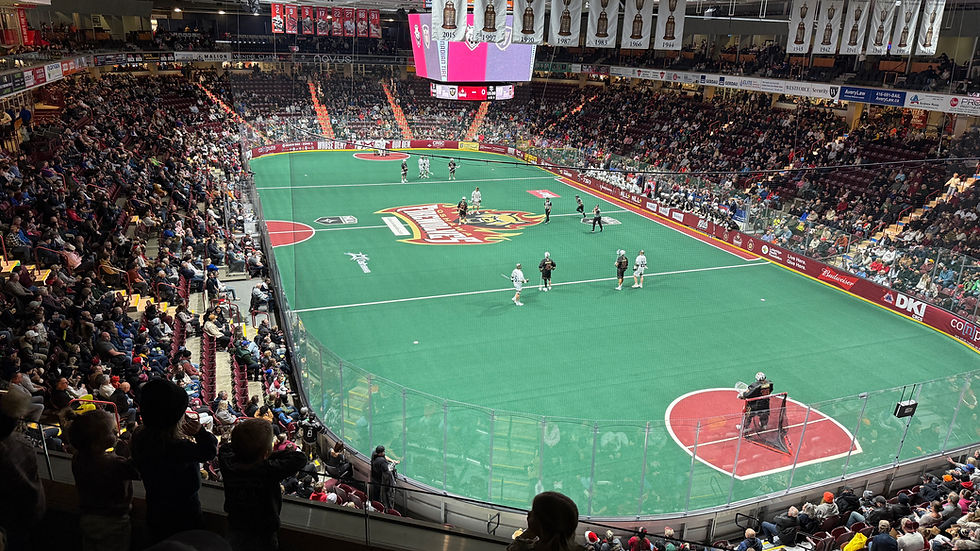Taking Sights and Sounds for Granted at Sports Arenas
- Meg Minard

- Jun 8, 2016
- 3 min read
Updated: Jul 30

It’s something many sports fans take for granted; the ability to see and hear a sport’s game action, the fans, the public address announcer, the music (even if it is too loud at most venues), and often, those never-ending advertisements.
Four years ago I attended a game with Reggie Deal, a blind baseball sports fan as he traveled to all stadiums in 30 days.
Recently I interviewed super-sports fan, Gary Noll, who is deaf. I was eagerly apprised of what features sports venues can include for fans who can’t hear at all (or those with hearing impairments). These features can help deaf fans with the game day experience and enhance their passion and excitement of the game.
While I find myself muting the Stanley Cup playoff game broadcasts on TV because the announcers talk too much about things not related to the game, it never occurred to me that someone who cannot hear might yearn that kind of yammer. But that’s TV, not a live game.
Several legal battles in the United States have occurred over the last five years or so where fans have filed suit claiming inadequate closed captioning at sports venues. Cases include University of Maryland College Park (Maryland Stadium and Comcast Center), University of Phoenix Stadium (Arizona Cardinals), and Ohio State University, to name a few.
At a live game for most sports venues in the United States, it is required by the ADA (American Disabilities Act) to have visuals for deaf fans. Basic things like:
Captioned public service announcements, including pre-game information
Play by play information and score
Referee penalty explanations
In-game entertainment announcements
Advertising
End-of-the-game announcements, final score and information regarding the next home game
Beside the items listed above, Gary Noll recommends stadiums include the following as a part of their closed captioning:
Evacuation/safety information
Entertainment and celebrations happening on the field
Celebrity sightings
Promotions being offered
Fan club or other membership information
Song lyrics
And as importantly, make the closed captioned letters BIG on the scoreboard/video board so fans in faraway seats can read the messages. This recommendation would be a benefit for all fans, not just those who cannot hear.
Gary also suggests the following:
Post closed captioning on ancillary scoreboards/TVs throughout the concourse (not just in the area where the game is played)
Employ highly-experienced captioning vendors as how they portray the spoken word makes a world of difference
Engage or hire an individual (at guest services or otherwise) who knows American Sign Language (ASL) so deaf fans can meet, greet and send a big hello using that language
Position the closed captioning in all areas of the venue so no matter where a deaf fans sits, he/she can read the words
Also recommended is if the venue has a big screen outside the stadium like Air Canada Center or the indoor Madison Square Garden lobby, include closed captioning on those screens as well.
The scoreboard, ribbon banners and preferably the video board is the best place for closed captioning, according to Gary. Handheld devices don’t work well as looking at a handheld device prevents a fan from watching a fast paced game such as hockey or soccer. And deaf fans need their hands free for American Sign Language (ASL) communication, eating food, applauding, etc.
Understandably there’s a cost associated for all of this.
The technology available today for closed captioning includes prerecorded segments and live segments.
Prerecorded segments at sporting events could include safety and evacuation instructions, advertisements, traditional song lyrics, and even common promotions. Trained caption writers, using special captioning software, transcribe the audio portion of the segment into a computer, inserting codes that determine when and where each caption will appear on the screen.
Live segments could include the public address announcer, referee/umpire explanations, and play by play information. Currently, there are four types of captioning for live events: stenographic captioning (the only method available to caption a live, unscripted sports event), manual live display, electronic newsroom, and a hybrid system.
With technology advancing so quickly, perhaps five years out, there can be the ability for a radio broadcaster’s play by play call to be voice recognized and immediately captioned on a stadium’s video board.
Thanks, Gary, for our conversations and your continued effort at advocating features that will enhance deaf fans’ sports entertainment enjoyment and appreciation.







Comments